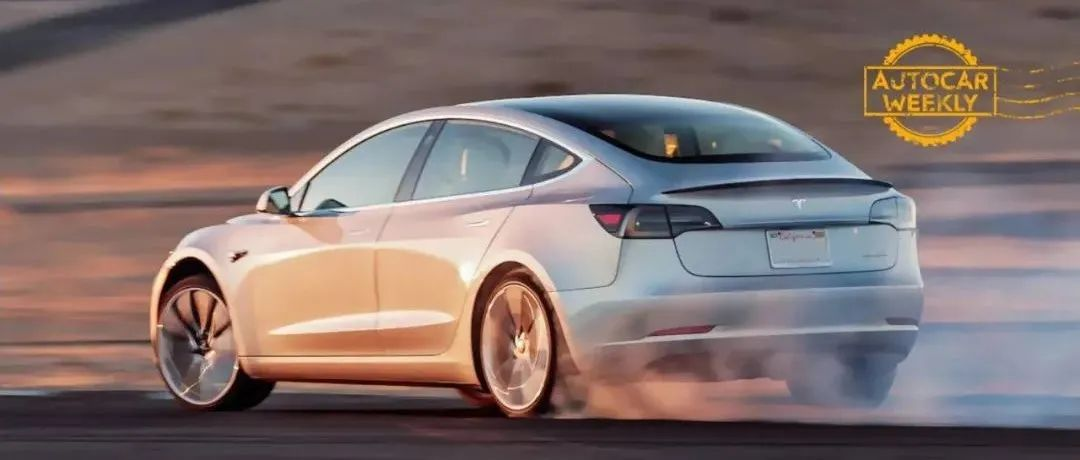*This article is reproduced from the autocarweekly WeChat official account.
Author: Ao Ao Hu
“If you drive an electric car, you won’t even have the nerve to say hello to anyone.”
If a new version of “The Big Shot” is remade in 2030, this line may be used. In the cognition of the fossil fuel era, there has always been a deep-rooted worship of rear-wheel drive. Even though car power has improved over the years, the proportion of four-wheel drive requirements under high horsepower is increasing, but the status of rear-wheel drive has never been shaken.
All-wheel drive is more like another choice compared to rear-wheel drive. In terms of drivetrain efficiency, energy efficiency, fuel consumption, space, and weight, rear-wheel drive can still say “I have the advantage.” In the food chain of performance that has become less important, from the S600 to the Phantom and to the Maybach, rear-wheel drive is the end; the top supercars that need everything, rear-wheel drive’s position is always a bit higher.
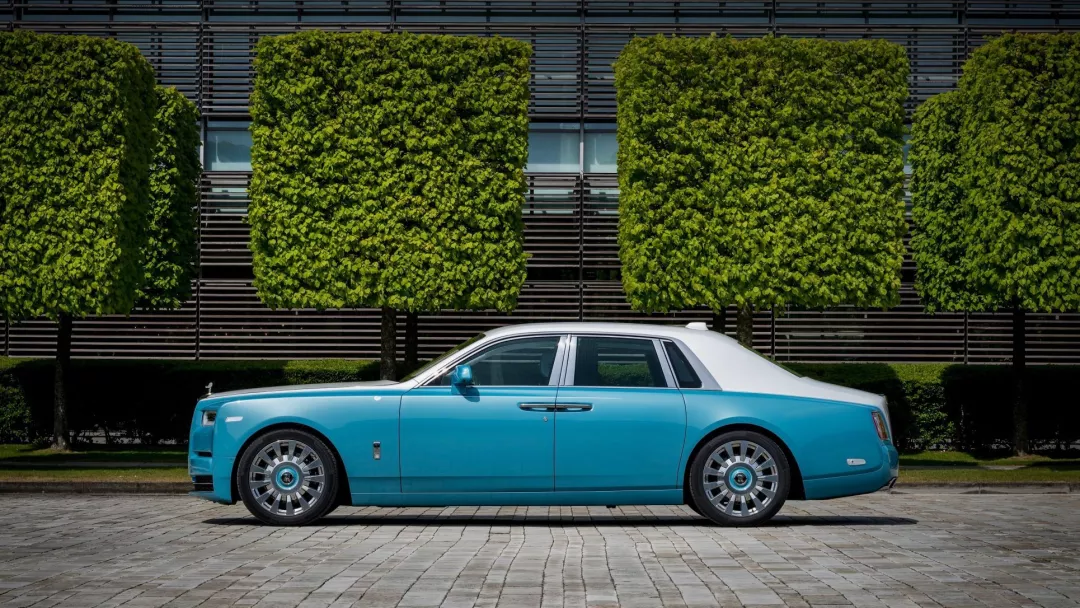
However, in the pure electric era, the situation is likely to change. Rear-wheel drive is becoming more and more like the label of the entry-level version of high-end models.
NIO has firmly stated that a single-motor version will never be released, and dual-motor is the “bottom line” of high-end electric cars. Although it sounds a bit extreme, it is not entirely unreasonable: if rear-wheel drive and four-wheel drive of fossil fuel cars each have their own advantages and disadvantages, then dual-motor four-wheel drive of electric cars has become a more ideal drivetrain layout. The two used to occupy their respective positions, but now there is a trend of superiority.
Everyone knows the benefits of electric motors, whether rear-wheel or four-wheel drive
When people talk about the advantages of electric vehicles, they often refer to the freedom that electric motors bring to the layout of the entire vehicle. The bulky and heavy internal combustion engines need an entire engine compartment to accommodate and arrange their attachments; mechanical drive determines that an additional drive shaft will be required, which will inevitably increase the weight and volume of more transmission shafts, half shafts, and more transmission losses for rear-wheel drive and four-wheel drive on fossil fuel cars, which results in more cost and sacrifice of practicality.
The small size of electric motors and the flexibility of electric transmission allow electric vehicles to almost freely choose any type of drivetrain layout, which is a solid good news for rear-wheel drive and four-wheel drive systems that require more cost and preformances on traditional fuel vehicles. In reality, you will find that the threshold for choosing a rear-wheel drive electric car today is much lower overall than choosing a rear-wheel drive fossil fuel car (take a look at the ID.3).
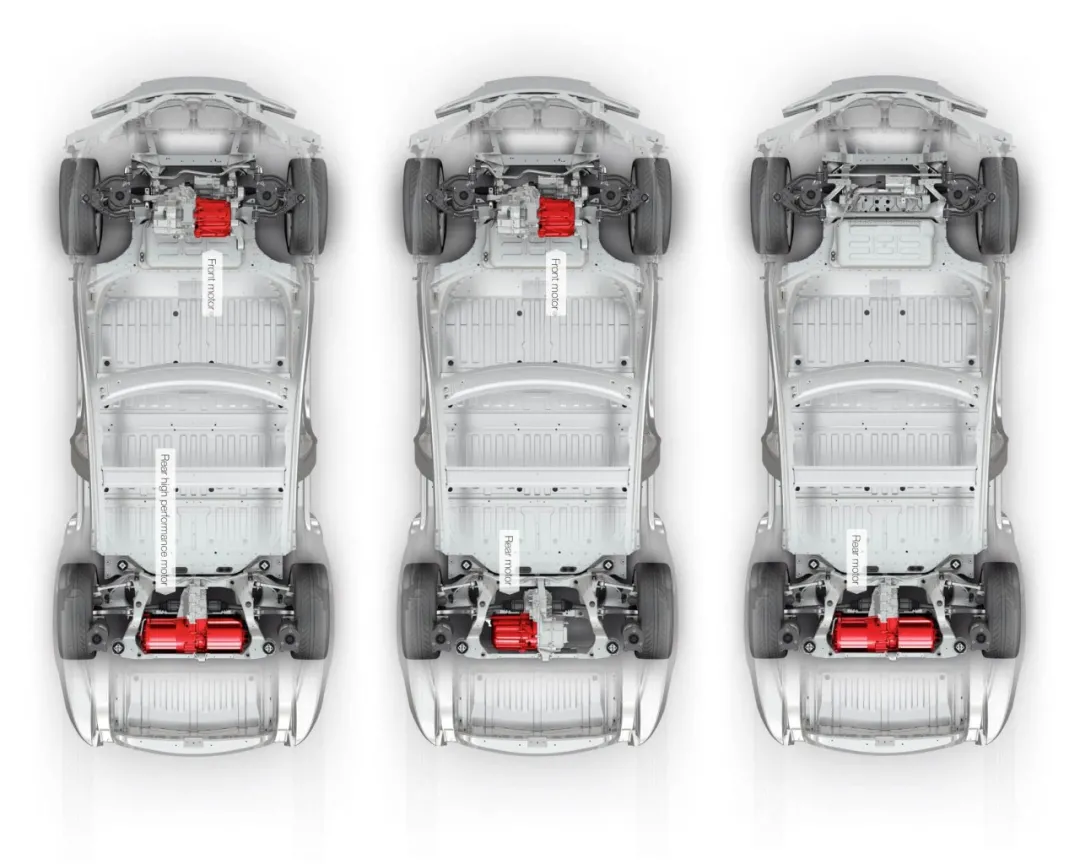
However, just this reason cannot explain why high-end electric cars today are all choosing dual-motor four-wheel drive, and there are rare rear-wheel drive or high-power single-motor rear axles in the entire product line. For high-end electric cars, the rear-wheel drive version is only used to lower the threshold. Rear-wheel drive has become a synonym for the entry-level version, and the “super rear” of the fossil fuel era is no longer popular.
While the electric motor does bring flexible layout advantages, the reason why all-wheel drive has become mainstream in high-end pure electric cars is not exclusively because of the small size and flexibility of electric motors.
The rewards of four-wheel drive are high and the costs are lowTo achieve four-wheel drive in a gasoline-powered car, “connecting the wheels with a drive shaft” is far from enough. When the vehicle needs to turn, the wheels must be able to rotate at different speeds, which requires the addition of a differential between the left and right wheels on the drive shaft. When both wheel axles become drive axles, the required differential changes from one to three (between the front wheels, between the rear wheels, and between the front and rear axles).
However, this is only the first step. Common open differentials will transfer most of the power to the slipping wheel when one of the wheels slips, which is commonly known as “wherever it is easier to rotate, that’s where the power goes.” For four-wheel drive models, this is even more difficult to accept. You would not want one of the four wheels to slip and spin out of control in muddy terrain, while the other three wheels are not doing any work.
Moreover, the meaning of four-wheel drive is not just “making all four wheels” have power, but “when some of the four wheels slip, the remaining wheels can continue to work and even help out.” To achieve this, a limited-slip differential device is needed, such as a limited-slip differential and a multi-plate clutch. When a wheel loses grip, it ensures that the power from the remaining wheels is effectively released, and even magically transfers the power from the slipping wheel.
Due to the different types of differential mechanisms between the center/front and rear axles, there are two types of four-wheel drive: full-time four-wheel drive and part-time four-wheel drive. If a connecting and disconnecting transfer case is used instead of a center differential, it forms a part-time four-wheel drive. Since it lacks the differential function between the front and rear axles, it can only enter four-wheel drive without considering the differential problem in mud, sand, and snow.
If some of this is not well understood, it doesn’t matter. The point is, mechanical transmission is a complicated matter, making four-wheel drive for gasoline-powered cars very troublesome, and getting an excellent four-wheel drive system is even more complicated.
Therefore, for electric cars, four-wheel drive is achieved by the front and rear axle motors. Not only does it eliminate the need for a central drive shaft but also the central differential-a crucial component for mechanical four-wheel drive. The power between the front and rear axles is physically separated, naturally eliminating the need for any type of central differential mechanism or differential device with limited slip capabilities.Early reports compared the off-road capability of the Model 3 against the Audi A5 Quattro. Although it should be noted that the Quattro on the A5 is not a dedicated four-wheel-drive system, the performance of both vehicles proved the ability of electric motors for four-wheel drive. With independent front and rear axles, without the need for a high-performance central differential, it can easily achieve similar or even better four-wheel drift effect (of course considering the advantage of high instantaneous torque of electric motors).
If we ignore the differences in output characteristics between gasoline and electric motors, we can think of dual-motor four-wheel drive as a gasoline vehicle with one internal combustion engine in the front and one in the back-which naturally can achieve better four-wheel drive performance.
Electric cars use dual motors on the front and rear axles for four-wheel drive, not only replacing the mechanical four-wheel drive system of gasoline vehicles but also almost equivalent to the “impossible layout” of a gasoline car with one internal combustion engine in the front and rear. The cost? Compared with gasoline vehicles, the weight of a motor may not exceed the weight gain of a complete four-wheel drive system. The demand for supply chains and production lines is also much smaller than the demand for four-wheel drive models of gasoline vehicles.
As for cost and autonomy, don’t forget that we are discussing the upper structure of the high-end market. The increased autonomy due to reduced performance is not very meaningful here, just like Rolls-Royce does not provide Phantom with a four-wheel drive system to consider fuel economy.
Power Under Control
In the era of gasoline vehicles, there is now a more mainstream trend for four-wheel drive because the overall power level of cars is improving. With the support of turbochargers and hybrid systems, today’s high-end gasoline vehicles can easily provide strong power that could only previously be offered by V8 or V12 engines, and rear-wheel drive is showing signs of struggling to cope.
Against this background, high-performance luxury models are more widely using four-wheel drive. Although Rolls-Royce insists on keeping the Phantom with rear-wheel drive, the smaller Ghost model has always been four-wheel drive. Mercedes S600 and S680 have always been pure rear-wheel drive, while the S500 below it has standard 4MATIC. It is difficult for these “normal” luxury cars that need to consider driving performance to leave the traction of all four wheels.
Pure electric driving exacerbates this problem because of its different operating principles. In theory, electric motors can obtain maximum torque instantly, without waiting for the speed to climb to reach the peak, unlike an internal combustion engine. This characteristic puts more pressure on traditional rear-wheel drive. When the entire vehicle needs a higher power level, it has become a universal option to allocate more power to the front axle and the front motor.The current electric motor needs to bear heavier tasks and sometimes even need to adjust the suspension structure.
NIO has switched to a front five-link suspension for the first time on the ET7, which is continued on the ET5, indicating that this will most likely become NIO’s standard configuration. Compared with the traditional double wishbone structure used by ES8 and ES6, the front five-link structure has a smaller kingpin offset and a smaller kingpin inclination angle, which makes it more adaptable and controllable to high power front-wheel drive.
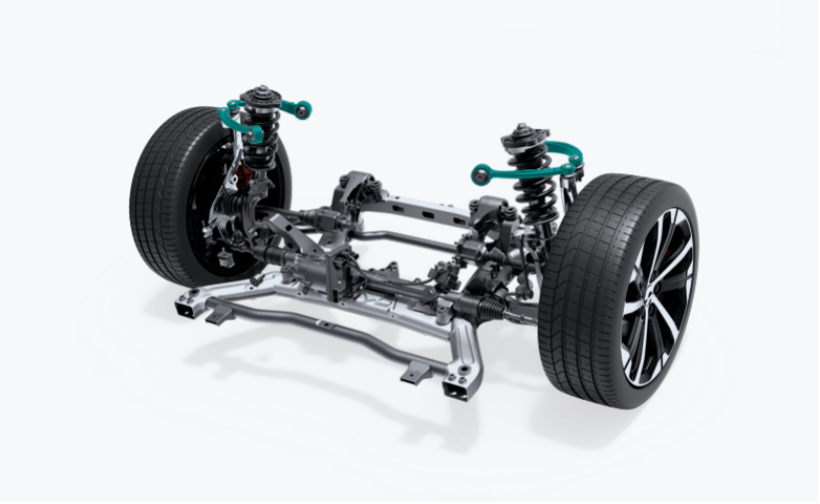
The change is due to the change in the power system. ES6, ET7 and ET5 all adopt the front permanent magnet and rear asynchronous motor power configuration, so the front permanent magnet motor with better energy efficiency is often used for daily driving. Starting from ET7, the front motor power is increased from 160kW of ES6 to 180kW. This increase just enters the area near the “off-limits” of traditional front-wheel drive cars with excessive power for the front axle.
The experience of the era of fuel-powered sport cars tells us that when the power of front-wheel drive cars reaches around 200kW, they are prone to be unsuitable for high power on the front axle. NIO changed the front suspension structure to a five-link structure, which should be considered to allow the front motor power to more fully meet daily driving needs and reduce the need for the rear motor to intervene. From this move, we can see that their rejection of the idea of a single motor rear-wheel drive is serious.
Add one extra motor for environmental protection
Another symbolic regret of a rear-wheel drive electric vehicle is kinetic energy recovery. Because the load of the vehicle is transferred forward during braking, the braking pressure on the front wheels is greater than that on the rear wheels (so the front brakes are often larger than the rears). Therefore, when the motor is reversed to recover braking energy, the energy stored in the front wheels is significantly greater than that in the rear wheels. For models equipped with only one motor on the rear axle, the upper limit of energy recovery is less than that of the forward motor.
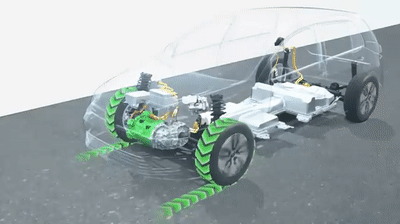
For this reason, the Volkswagen MEB platform can change the rear wheel brakes to drum-type, but dares not to make any changes to the front wheels. In the new front-wheel drive MEB configuration, although the pricing is more low-end and affordable, the front-wheel drive still has disc brakes on the rear wheels because there is no motor in the rear wheel to recover kinetic energy and share the braking pressure on the mechanical brakes.
Of course, the actual energy that electric vehicles can recover and use is not a very large part, and the difference in energy limits between the front and rear axes is even smaller. However, it is not necessary to stick to the actual effect, compared with the single-motor rear-wheel drive, kinetic energy recovery on the front axle can ultimately make better use of energy, indicating that the dual-motor with forward motor is a more comprehensive layout.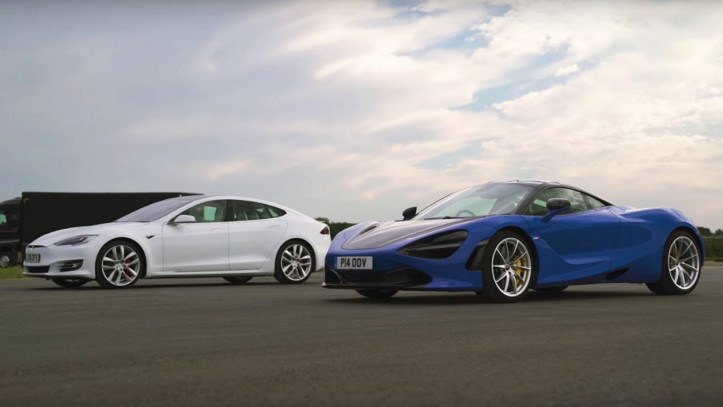
The root of the “rear-wheel-drive supremacy” belief in the era of gasoline-powered cars is the fact that rear-wheel drive has been the most ideal form of propulsion for gasoline-powered cars for a long time. Even though the position has been gradually approached by all-wheel drive in recent years, the two have not yet reached the point of exchanging status. However, regarding electric cars, with the flexible distribution of power units between the front and rear axles (motors), rear-wheel drive no longer has any obvious advantages over dual-motor all-wheel drive, except for cost.
As the era of dual-motor all-wheel drive as the best layout for electric cars arrives, rear-wheel drive electric cars will still occupy a market, but the pursuit of rear-wheel drive may fade away.
This article is a translation by ChatGPT of a Chinese report from 42HOW. If you have any questions about it, please email bd@42how.com.
